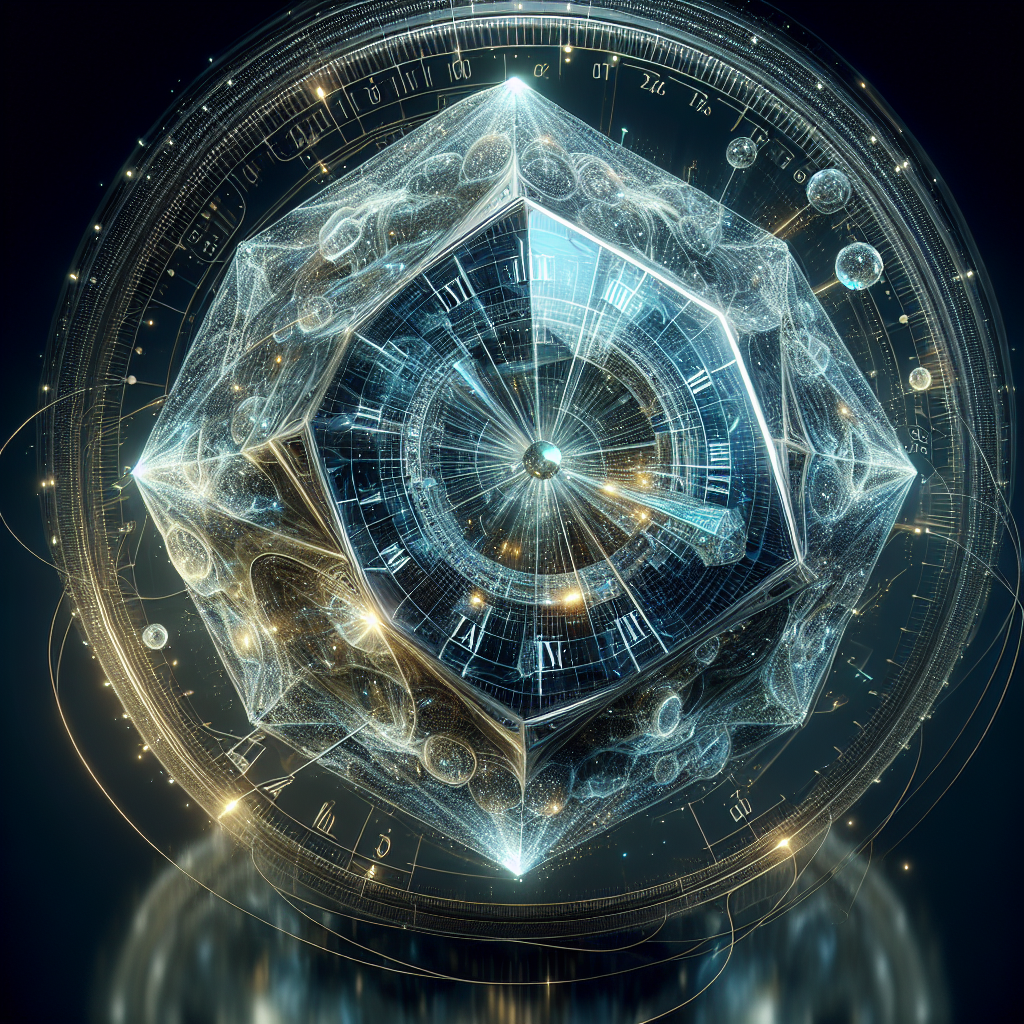Science
Physicists Discover New Time Crystal, Advancing Quantum Physics

A team of physicists has revealed a groundbreaking new form of time crystal, significantly advancing the field of quantum physics. This discovery, made by researchers from the Massachusetts Institute of Technology (MIT) and the University of California, Berkeley, may reshape our understanding of time, symmetry, and the principles governing quantum systems.
Understanding Time Crystals
To grasp the significance of this breakthrough, it is essential to first understand what time crystals are. The concept was initially proposed by Nobel laureate Frank Wilczek in 2012. Unlike traditional crystals, which display repeating patterns in space, time crystals exhibit periodic motion in their ground state, allowing them to oscillate and change without expending energy. This behavior challenges conventional thermodynamic laws, which state that systems tend to reach equilibrium over time.
Time crystals maintain non-equilibrium states, suggesting that time may be more complex than previously thought and potentially opening avenues for novel quantum technologies.
The Groundbreaking Discovery
The latest form of time crystal was created using a chain of qubits, the fundamental units of quantum information. This innovative approach utilized advanced experimental techniques in quantum computing to produce a time crystal characterized by oscillations at frequencies that are multiples of the external force applied to the system. This discovery is particularly exciting because it not only confirms the existence of time crystals in more intricate arrangements but also highlights their potential for manipulation in practical applications.
The implications for quantum computing are immense. Time crystals could enhance the stability of qubit systems, leading to longer coherence times and improving the performance of quantum algorithms. As coherence remains a significant challenge in quantum computing, this breakthrough could expedite the development of viable quantum technologies.
Beyond quantum computing, the exploration of time crystals touches on various scientific domains, including condensed matter physics, cosmology, and information theory. Understanding the properties of time crystals may provide deeper insights into fundamental questions about the nature of time, gravitational effects, and even the structure of spacetime itself.
Despite the promise of this discovery, challenges remain. Researchers must address questions regarding the stability and scalability of time crystals, as well as their responses to environmental influences. Further investigations are essential to unpack the fundamental mechanics behind time crystallization and explore its potential to unify diverse areas of physics.
As the scientific community delves deeper into this captivating phenomenon, the study of time crystals could revolutionize our understanding of the universe. The unveiling of this new form of time crystal represents a significant milestone in the ongoing quest to comprehend the complexities of quantum systems.
In summary, this discovery not only enriches our scientific knowledge but also brings us closer to unlocking the potential of quantum technologies. As researchers continue to explore this intriguing landscape, the complexities of time offer a compelling frontier for future investigation.
-

 Science2 months ago
Science2 months agoUniversity of Hawaiʻi Joins $25.6M AI Project to Monitor Disasters
-

 Business2 months ago
Business2 months agoForeign Inflows into Japan Stocks Surge to ¥1.34 Trillion
-

 Top Stories2 months ago
Top Stories2 months agoBOYNEXTDOOR’s Jaehyun Faces Backlash Amid BTS-TWICE Controversy
-

 World2 months ago
World2 months agoBoeing’s Merger with McDonnell Douglas: A Strategic Move Explained
-

 Top Stories2 months ago
Top Stories2 months agoCarson Wentz Out for Season After Shoulder Surgery: Urgent Update
-

 Entertainment2 months ago
Entertainment2 months agoSydney Sweeney Embraces Body Positivity Amid Hollywood Challenges
-

 Top Stories2 months ago
Top Stories2 months agoMarc Buoniconti’s Legacy: 40 Years Later, Lives Transformed
-

 Lifestyle2 months ago
Lifestyle2 months agoKelsea Ballerini Launches ‘Burn the Baggage’ Candle with Ranger Station
-

 Health2 months ago
Health2 months agoInnovative Surgery Restores Confidence for Breast Cancer Patients
-

 Sports2 months ago
Sports2 months agoSteve Kerr Supports Jonathan Kuminga After Ejection in Preseason Game
-

 Entertainment2 months ago
Entertainment2 months agoZoe Saldana Advocates for James Cameron’s Avatar Documentary
-

 Science2 months ago
Science2 months agoChicago’s Viral ‘Rat Hole’ Likely Created by Squirrel, Study Reveals









